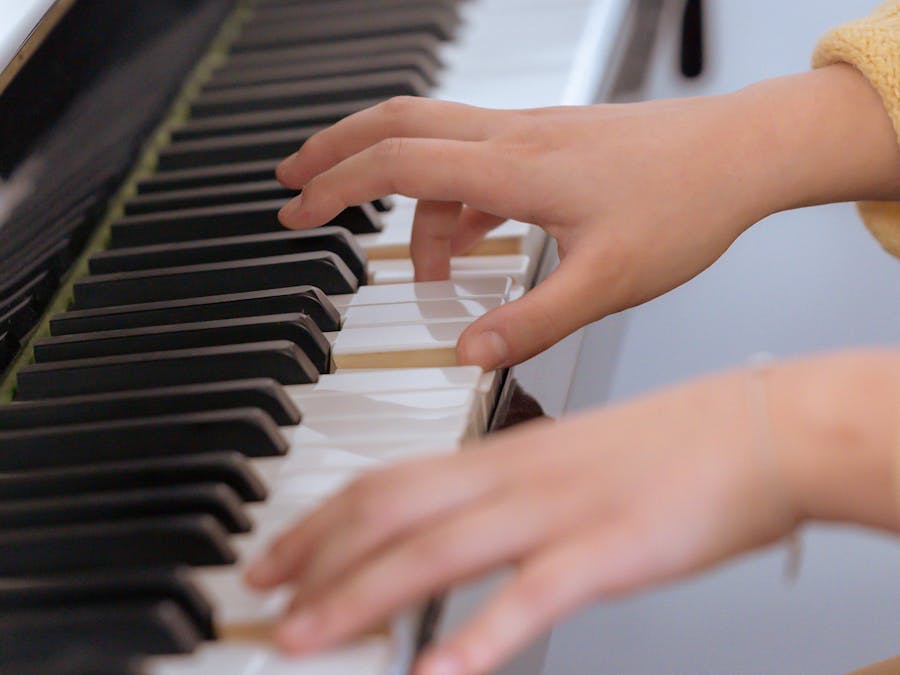 Piano Guidance
Piano Guidance
 Piano Guidance
Piano Guidance

 Photo: Erik Mclean
Photo: Erik Mclean
C major is a popular key for beginners because the scale only uses white keys, it has no sharps or flats. This makes many facets of learning easier including memorizing notes, reading, learning chords and inversions, improvisation plus understanding theory, intervals, harmony and chord progressions.

The short answer is: No one knows who invented music. No historical evidence exists to tell us exactly who sang the first song, or whistled the...
Read More »
The process of using a typewriter, cell phone, calculator, or a computer keyboard to write something is known as typing. Therefore, as the title...
Read More »
Seven Easy Piano Songs for Beginners Twinkle Twinkle. Twinkle Twinkle Little Star is always popular, especially with young students, but adults who...
Read More »
Four basic types of musical forms are distinguished in ethnomusicology: iterative, the same phrase repeated over and over; reverting, with the...
Read More »Of course you can still learn the black keys sooner but mostly learning music in C at the very start is certainly beneficial. I have a playlist on my YouTube Channel dedicated to learning all your major scales. You can view that playlist and pick which scale you’re after here. This ties in to playing music generally in C but reading deserved a specific mention. Learning to read from sheet music is almost a whole separate skill in and of itself. For a beginner, instead of just finding the correct notes, you now have to figure out which notes it is you need to find. Keeping this simple in the beginning without worrying about the black keys is most beneficial for your progression. There’s 2 ways a piece of sheet music can tell you you need to play one of the black keys. One way is to just use a flat symbol (b) or a sharp symbol (#) next to the note. For example, drawing a # next to the dot representing F means play F sharp. It’s just an extra bit of information to interpret that you don’t need when learning to recognize which notes to play and translate that immediately to the keyboard. The other way involves using something called key signatures. These essentially tell you at the start of the music which flats or sharps to use in the music. They are the sharps and flats that would be in the scale you’re meant to use. So now, not only do you have find them on the keyboard, but you also have to remember which ones are in the scale you are using to avoid playing the natural (white note) by mistake.

No matter the industry or position, your boss should never ask you to engage in any unlawful activities, work in unsafe conditions, prohibit you...
Read More »
Learning to play the piano as an adult can be intimidating. Many people limit themselves because they think they are too old or that it's too late...
Read More »Because of the layout of the piano, the same sized intervals will keep looking different depending on which note you start. For example, sometimes a major 3rd will be 2 white notes, but in other places it’s a mixture of black and white or possibly 2 black notes. For this reason, the shape of chords and scales on the keyboard are ever changing which becomes visually confusing very quickly. Root b2 M2 b3 M3 P4 #4/b5 P5 b6 M6 b7 M7 Octave C Db D Eb E F F#/Gb G Ab A Bb B C Intervals from C: M = Major P = Perfect The great thing about the key of C is that from the note C being our root, all the major and perfect intervals are white, and everything else is black. This makes it SO MUCH EASIER to see and comprehend elements of theory such as which intervals are used to build certain types of chords and scales and even how chord progressions work. For a super clear and helpful explanation of intervals, you can check out this video below from my YouTube channel

The toy piano, also known as the kinderklavier (child's keyboard), is a small piano-like musical instrument. Most modern toy pianos use round metal...
Read More »
The short answer is yes, it is okay to take a break from piano, but it is important to do it for the right reasons, and to understand the...
Read More »
Scales are game-changing for anyone beginning their musical journey, especially for piano players. Our Simply Piano app will teach you everything...
Read More »
The P45 uses the Advanced Wave Memory sampling, which is perfectly adequate, but slightly less impressive. While the pianos both feel the same, the...
Read More »